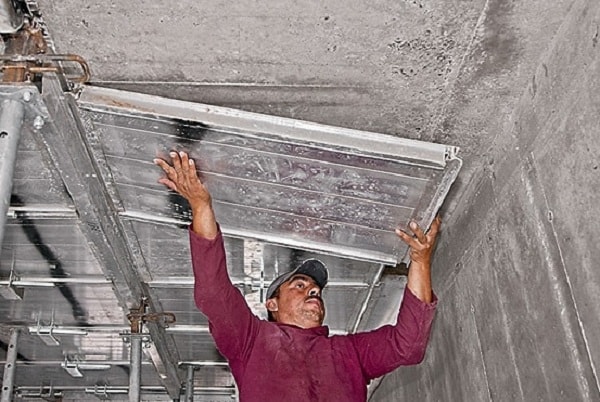The deshuttering period of a slab refers to the duration during which the formwork or shuttering is left in place after pouring the concrete slab. This period is critical for the curing and hardening of the concrete, as well as ensuring the structural integrity of the slab. Understanding the deshuttering period is essential to ensure the proper strength and durability of the slab. Let’s delve into the key aspects of the deshuttering period and its significance:
Curing of Concrete:
During the deshuttering period, the concrete undergoes the initial stages of curing. Curing is a process that involves maintaining adequate moisture and temperature conditions to promote hydration and the development of strength in the concrete. The deshuttering period allows the concrete to continue curing without any hindrance from the formwork.
Strength Development:
The deshuttering period plays a crucial role in the strength development of the slab. Concrete gains strength over time as the hydration process progresses. The duration of the deshuttering period depends on various factors such as the type of concrete mix, ambient conditions, and design requirements. It is typically determined based on the strength gain characteristics of the specific concrete mix used.
Structural Integrity:
Leaving the formwork in place for the appropriate deshuttering period ensures the structural integrity of the slab. Removing the formwork too early can result in premature load application and compromise the strength of the concrete. It is essential to adhere to the recommended deshuttering period to allow the concrete to gain sufficient strength and provide the necessary support to the structure.
Formwork Removal Time:
The deshuttering period varies depending on several factors, including the type of structural element, ambient conditions, concrete mix design, and any specific project requirements. In general, the deshuttering period for slabs ranges from 7 to 14 days. However, it is important to consult the structural engineer or follow the guidelines provided by the relevant building codes and standards for the specific project.
Ambient Conditions:
Ambient conditions such as temperature and humidity can significantly affect the deshuttering period. Higher temperatures can accelerate the curing process and strength gain, potentially reducing the deshuttering period. On the other hand, lower temperatures may extend the deshuttering period to allow for adequate strength development. It is crucial to consider the ambient conditions and adjust the deshuttering period accordingly.
Testing and Inspections:
Before removing the formwork, it is advisable to conduct tests and inspections to ensure that the concrete has achieved the desired strength and integrity. Non-destructive testing methods, such as the rebound hammer test or ultrasonic pulse velocity test, can employ to assess the concrete’s strength. Additionally, visual inspections should be performed to check for any signs of cracking or defects that may require remedial measures.
Safety Considerations:
While the deshuttering period is an essential step in the construction process, it is crucial to prioritize safety. Adequate shoring or temporary support should be provided during the deshuttering period to ensure the stability of the structure. Workers involved in the deshuttering process should follow proper safety protocols and use appropriate personal protective equipment (PPE) to mitigate any risks.
In conclusion, the deshuttering period of a slab is a critical phase in the construction process, allowing the concrete to cure, gain strength, and ensure the structural integrity of the slab. Adhering to the recommended deshuttering period, considering ambient conditions, conducting necessary tests and inspections, and prioritizing safety are key aspects to understand and implement during this phase. Consulting with a structural engineer or construction professional can provide valuable guidance specific to the project and help ensure the success of the deshuttering process.

